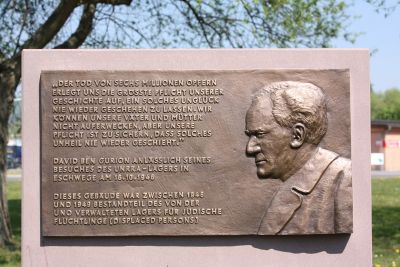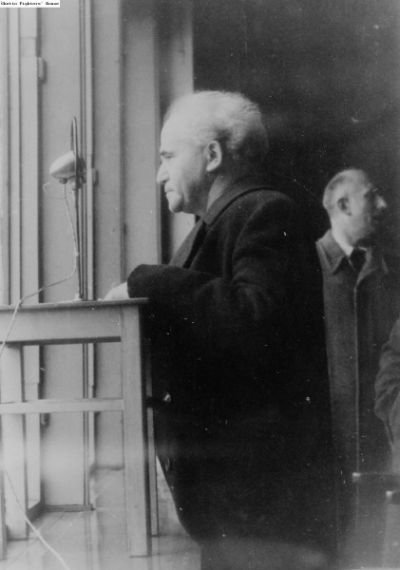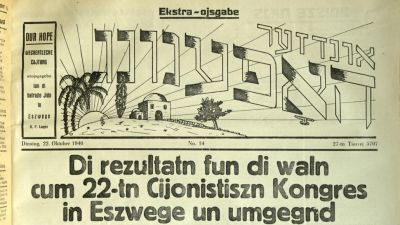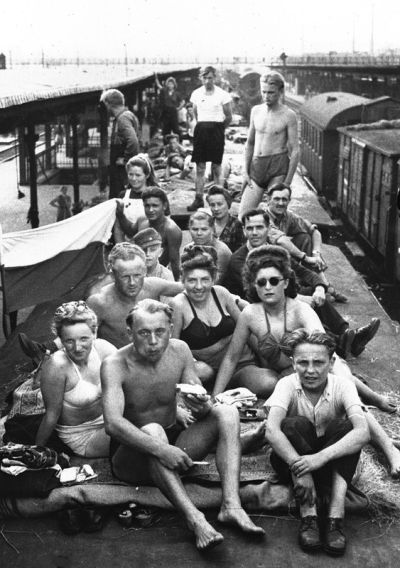The DP camp in Eschwege
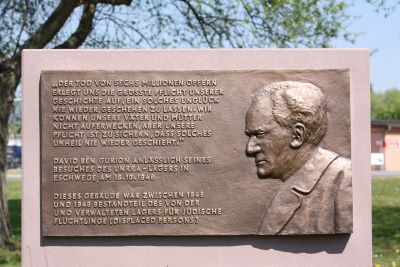
Like other DP camps which were established in North Hesse after the end of the war, Eschwege quickly became a cultural centre for Yiddish-language Jewish life. The camp initially consisted of barracks from a former military airfield to the east of the city of Kassel. Shortly after it was opened in 1946, more than 1,700 people had already found refuge there; by the end of that same year, the number had risen to over 3,000. The building plans for the temporary houses, which were drawn up in July 1946[1] by the architects of Team 522 of the United Nations Relief and Rehabilitation Administration (UNRRA) have been preserved, and give us a general idea of the size of the camp. Several education facilities for children were planned, in the form of kindergartens, a primary school, and also religious schools for all age groups (a cheder, Talmud Torah, yeshiva and Bet Ya’akov). In one kibbutz on the former airfield, where fruit and vegetables were grown, the pioneers were trained in field cultivation in preparation for the life in “Eretz Israel”, in the League of Nations’ Mandate for Palestine. The camp contained several synagogues, sports clubs, a cinema and an auditorium, and had its own theatre group as well as a newspaper published in Yiddish: Undzer Hofenung[2]. One of the refugees who founded the newspaper was Mordechai Dunetz, who was born in Poland. In a video, he explained[3] that it was necessary to improvise in order to be able to print the Yiddish Zionist newspaper using German equipment and a press that only contained Latin letters.
The later Prime Minister of Israel, David Ben-Gurion, visited the UNRRA camp on 16 October 1946. The event is documented in several photographs. During that time, Ben-Gurion was actively trying to persuade Jews who had survived the Holocaust to emigrate to Palestine. His visit is also officially commemorated in the town by a large, bronze memorial plaque. Unveiled in 2012, the plaque marks the site of a former building in the large DP camp, which now houses the Eschwege tax office. The plaque shows an embossed head of Ben-Gurion and a quote in which he speaks of the duty to ensure that “such an atrocity” as the murder of the European Jews “never occurs again”. The monument was created by the artist Ruth Lahrmann on behalf of the town of Eschwege.
[1] HHStAW stock 531 (OFD FFM) No. 543: Conversion and expansion of the former Fliegerhorst Eschwege airfield to create a DP camp and to accommodate 6,000 Jewish Displaced Persons (UNRRA Team 522 Eschwege).
[2] Kesper, Dieter E. (ed.): Unsere Hoffnung. Das Schicksal Überlebender des Holocaust im Spiegel einer Lagerzeitung von 1946, published by residents of the Displaced Persons camp on the site of the former military airfield in Eschwege, Eschwege 1996. See https://blog.sbb.berlin/neuerwerbung-dp-literatur-undzer-hofenung-eschwege-1946-1947/ (last accessed on 4/11/2022).
[3] Mordechai Dunetz was interviewed on 25 June 2014 as part of the Yiddish Book Center’s Wexler Oral History Project: https://www.youtube.com/watch?v=raKgJhE9Sak (last accessed on 4/11/2022). A longer version of the interview is available here: https://www.yiddishbookcenter.org/collections/oral-histories/interviews/woh-fi-0000564/mordechai-dunetz-2014 (last retrieved on 4/11/2022).
The camp was closed in 1949, despite the fact that, in March of that year, it still housed 1,669 people[4]. One contemporary witness is Michael Edelstein. He was born in Poland in 1931. In a book written and published by his children[5], he recounted his childhood in Skała-Podolska (voivodeship of Tarnopol; now in Ukraine), his life in hiding during the war, and the three years in the camp in Eschwege before he finally emigrated to the US in 1951. Another witness is Chaim Jegergarn, who was born in Janów Lubelski (voivodeship of Lublin) in 1912. A tailor from a poor Jewish family, he left Poland for the Soviet Union before the outbreak of the war. As the front drew closer, he moved to Tashkent in Central Asia. He did not return to Poland until after the war, continued westwards and found shelter in the camp in Eschwege. From 1946–1948, he spent three years there as a DP with his family. In July 1948, he moved to Montreal with his family and one of his brothers, who had survived the Holocaust[6]. He recorded a video account of his life, which is available in the Jewish Public Library in Montreal (Archives de la Bibliothèque publique juive)[7].
The same archive in Montreal contains photographs obtained from the Eschwege camp by Musia Schwartz (Miriam Szpisajzen, 1930–2021). She was born in Tomaszów Lubelski (now the voivodeship of Lublin). After surviving the ghetto, a concentration camp and the death of her family, she managed to escape the Holocaust by living under a false identity. After finding temporary shelter in Eschwege, she emigrated to Canada in 1948 as an orphan. She became a Professor of Literature in Montreal (Vanier College; Sir George Williams University, now Concordia University), specialising in comparative literature (with a doctoral dissertation at McGill University in 1979) and was a highly active member of the Jewish cultural community in the city. In symposia with Canadian students[8], she kept the memory of the Holocaust, and its dramatic impact on her Polish Jewish family, alive. An excerpt from her witness statement of 1994 in the Montreal Holocaust Museum is freely available as a video[9].
The Polish Jew Abraham [Umcza] Kerber (1907–1978), born in Gąbin (voivodeship of Masovia), who photographed[10] life in the Eschwege camp in 1946/47, chose a different path before emigrating to Israel. Like Ephraim Robinson in the camp in Zeilsheim, Umcza Kerber’s photographs show everyday life in the camp and the rebuilding of social connections between young adults waiting to start a new life elsewhere in a different country.
Emmanuel Delille, July 2022
[4] https://www.after-the-shoah.org/eschwege-juedisches-dp-lager-jewish-dp-camp/ (last accessed on 4/11/2022).
[5] Edelstein, Michael/ Ruby, Walter/ Ruby, Dan: Live Another Day. How I Survived the Holocaust and Realized the American Dream, Oakland (CA) 2020.
[6] He arrived in Canada on 11 October 1948. ITS Arolsen, Document ID: 112216813 (Chaim JEGERGARN), https://collections.arolsen-archives.org/de/document/112216813
[7] https://www.cjhn.ca/fr/list?q=Eschwege&p=1&ps=20 (last accessed on 4/11/2022).
[8] http://www.vaniercollege.qc.ca/events/holocaust07/musia_schwartz.html (last accessed on 4/11/2022).
[9] https://www.youtube.com/watch?v=nVOnGA5qPG8 (last accessed on 4/11/2022).
[10] Pictures by Kerber about the cultural life in the camp at: http://www.zchor.org/eschwege/eschwege.htm (last accessed on 4/11/2022).
